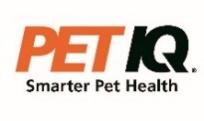profitability; and the risks set forth under the “Risk Factors” section of our Annual Report on Form 10-K for the year ended December 31, 2021 and other reports filed time to time with the Securities and Exchange Commission.
Additional risks and uncertainties not currently known to us or that we currently deem to be immaterial also may materially adversely affect our business, financial condition or operating results. The forward-looking statements speak only as of the date on which they are made, and, except as required by law, we undertake no obligation to update any forward-looking statement to reflect events or circumstances after the date on which the statement is made or to reflect the occurrence of unanticipated events. In addition, we cannot assess the impact of each factor on our business or the extent to which any factor, or combination of factors, may cause actual results to differ materially from those contained in any forward-looking statements. Consequently, you should not place undue reliance on forward-looking statements.
Non-GAAP Financial Measures
In addition to financial results reported in accordance with U.S. GAAP, PetIQ uses the following non-GAAP financial measures: Adjusted net income, adjusted gross profit, adjusted gross margin, adjusted SG&A, adjusted EBITDA, and adjusted EBITDA margin.
Adjusted net (loss) income consists of net (loss) income adjusted for tax expense, acquisition expenses, integration costs and costs of discontinued clinics, non-same-store revenue, non-same-store costs, litigation costs, loss on debt extinguishment, stock-based compensation expense, CFO transition and COVID-19 related costs. Adjusted net income (loss) is utilized by management to evaluate the effectiveness of our business strategies.
Adjusted gross profit consists of gross profit adjusted for gross (profit) loss on veterinarian clinics and wellness centers that are not part of same store sales and COVID related costs. Adjusted gross profit is utilized by management to evaluate the effectiveness of our business strategies.
Adjusted SG&A consists of SG&A adjusted for acquisition expenses, stock-based compensation expense, non-same store adjustment, integration costs, COVID-19 related costs, loss on debt extinguishment and related costs, litigation expense and CFO transition costs.
EBITDA, Adjusted EBITDA and Adjusted EBITDA margin are non-GAAP financial measures. EBITDA represents net income (loss) before interest, income taxes and depreciation and amortization. Adjusted EBITDA represents EBITDA plus adjustments for transactions that management does not believe are representative of our core ongoing business. Adjusted EBITDA margin is adjusted EBITDA stated as a percentage of net sales. Adjusted EBITDA is utilized by management: (i) as a factor in evaluating management's performance when determining incentive compensation, (ii) to evaluate the effectiveness of our business strategies and (iii) allow for improved comparability over prior periods due to significant growth in the Company’s new wellness centers. The Company presents EBITDA because it is a necessary component for computing adjusted EBITDA.
We believe that the use of adjusted net (loss) income, adjusted gross profit, adjusted gross margin, adjusted general and administrative expenses (Adjusted SG&A), adjusted EBITDA, and adjusted EBITDA margin provide additional tools for investors to use in evaluating ongoing operating results and trends. In addition, you should be aware when evaluating adjusted net income, adjusted gross profit, adjusted SG&A, adjusted EBITDA and adjusted EBITDA margin, that in the future we may incur expenses similar to
